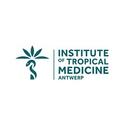In short
The classical rabies vaccination schedule consists of 3 intramuscular vaccine doses given over a period of 3-4 weeks, which is relatively time consuming, expensive and requires a large volume of vaccine. To speed up the procedure, limit the costs and save vaccine, we are validating alternative intradermal schedules requiring smaller volumes of vaccines and fewer visits. These studies are done in partnership with the Military Hospital Queen Astrid, the Institute of Tropical Medicine in Antwerp and the Academic Medical Centre in Amsterdam.
Project description
Rabies is an invariably fatal infectious disease caused by the rabies virus. Annually, millions of people are exposed to the virus, mainly in developing countries, and about 59000 people die from the disease. The virus can be transmitted by virtually all mammals, but most infections occur after close contact (bite, scratch, …) with an infected carnivore (mainly dogs) or bat.
Infection with the virus can be avoided by preventive vaccination. The classical vaccination schedule requires 3 vaccine doses, administered intramuscularly over a three to four week period. This schedule is not practical since it requires three separate visits and timely planning before departure to a high risk region. In addition, intramuscular vaccination requires a high volume of vaccine (0.5 to 1 ml per injection), potentially leading to vaccine shortages.
The intradermal vaccination trials attempt to address both problems: on the one hand by shortening the schedule (1 week or even 1 day instead of 3 weeks) and on the other hand by reducing the amount of vaccine used per injection (100 µl instead of 0.5-1 ml per injection site).
To evaluate the effectiveness of these shorter schedules, blood is collected at regular time points after initial vaccination. One year after initial vaccination, the response to a booster vaccination is evaluated.
Sciensano's project investigator(s):
Service(s) working on this project
Partners





